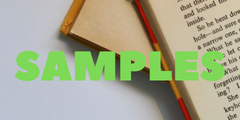The Canterbury Tales documents the social, political and economic climate of England in 14th-century. The stories use generic characters to demonstrate the turmoil that characterized this time period. During the 1340s bubonic pester decimated England. During the Middle Ages and Canterbury Tales there are five classes of society: nobility (royalty), merchants and skilled artisans; and peasants. He shows how his pilgrims fail to fulfill their responsibilities by exposing every social level. There are different ways in which people perceive society. A person’s appearance can tell a lot about their character.
In medieval time, monks were a great help to people. They fed the hungry, cared for those who were sick, published books, and educated boys. The monk enjoys riding horses, eating, and hunting. The noble and wealthy classes enjoyed these activities. Monks grew their own food, made clothes and performed chores in the monastery. The monk, however, would rather hunt, ride horses and do chores. In the Canterbury Tales, the monk prefers a more modern way of life to the typical monastic lifestyle. The monk’s character is described by line 204 as being fat, personable and a bit of a rascal. In medieval times, weight was a symbol of wealth because the poor couldn’t afford to overeat. He also liked riding horses, and hunting. Hunting, and owning a horse was only for the rich and noble. The monk refused to obey the rules of his monastery. The monk is described as a man of great beauty and virility. The reader can tell that this monk is concerned about the people in his parish by the way he dresses. His clothing, such as ‘his grys-adorned sleeves/His sleeves purfiled along the hond/The fyneste on a long,’ are described in line 26.
Chaucer’s portrayal of the clergy is not as powerful as that of his ruling class. Chaucer, for example, uses a lot of satire to describe the Prioress/Nun. He mentions the Nun’s excellent manners and etiquette. She works so hard to gain respect and be seen as someone with higher status. Inline 26, “She tried to imitate the court’s behavior and was dignified to carry herself, so that she would be respected”. Prioress is a nun by profession. She appears as a woman, concerned with her conduct and manner. Nunthe Nun tries to make it appear that she is wealthy, despite her understanding of her duties. The narrator describes the Prioress in a mocking way, highlighting her snobbish airs and stolid mannerisms. She thinks she can sing well. However, her intonation is done indirectly via her nose. The Prioress’s French accent indicates that she prefers to emulate noble women, since French became the language at the court.
Chaucer accurately describes the Knight as an honorable, chivalrous warrior, who is always successful and determined to fight in defense of God’s dignity. Chaucer praises the Knight in a way that is not satirical, unlike many Chaucer images. The Knight’s modest clothes and stains show that his fighting is appropriate, not vain or extravagant.
Chaucer’s characters are reflected in their behavior and appearance. Chaucer Pilgrim wanted to know the true nature of all travelers, so their appearance and clothing was important. These descriptions painted a picture of each character in the Prologue. They included both the good and the bad.



